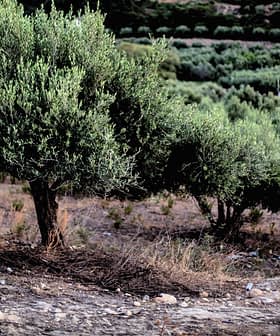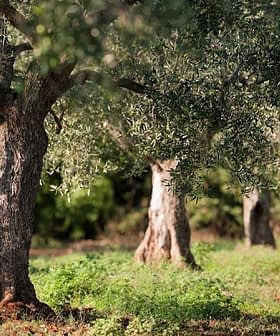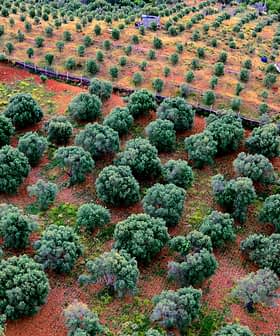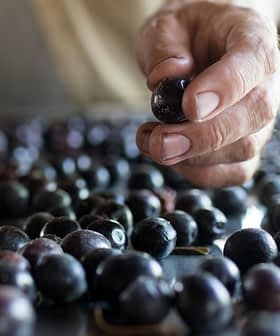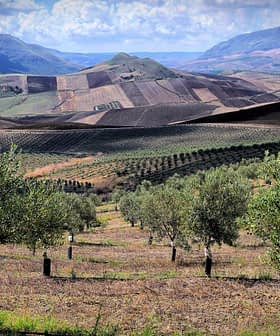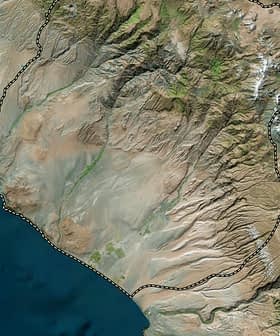Olive Council Data Shows Latest Harvest Results, Emerging Trends
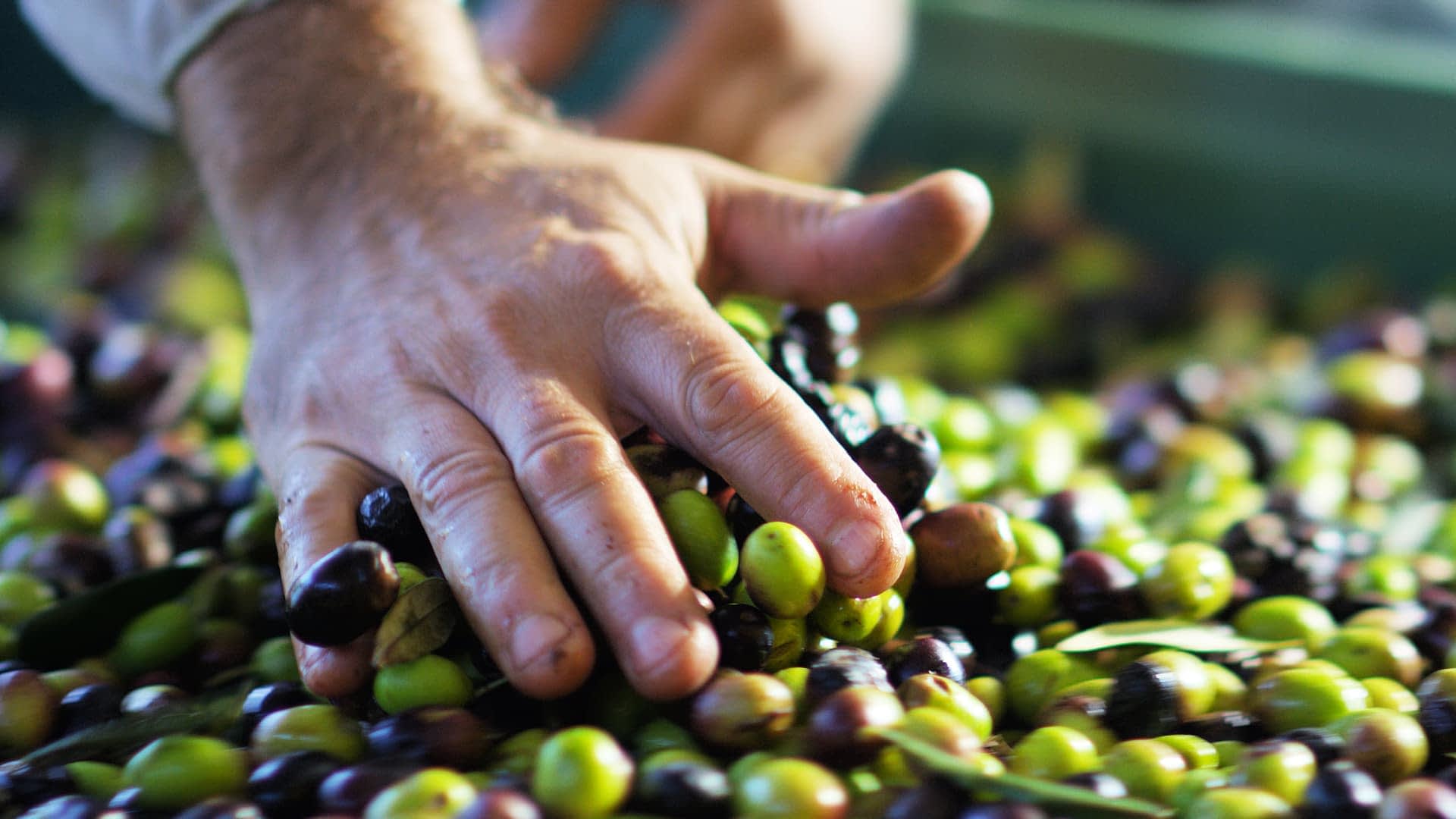
Global olive oil production is expected to increase by 32% in the 2024/25 crop year, with Spain, Tunisia, and Turkey driving the growth. Traditional producing countries like Spain and Greece have seen stagnant growth and production declines in the past five years, while emerging producers outside the Mediterranean basin, such as China and Saudi Arabia, have experienced significant increases in olive oil production with government support.
The International Olive Council forecasts that global olive oil production will climb to 3.38 million metric tons in the 2024/25 crop year, a 32 percent increase compared to last year and 13 percent above the five-year average.
Spain, Tunisia and Turkey were the driving forces behind this increase, with olive oil production expected to rise by 51 percent to 1.3 million tons in Spain, 55 percent to 340,000 tons in Tunisia and 109 percent to a record-high 450,000 tons in Turkey compared to the previous year.
Producers in Spain attributed the improved yield, which exceeded the five-year average by nearly 17 percent, to good crop conditions, including moderate spring temperatures and a wet winter that recharged previously parched rivers and aquifers.
See Also:2024 Harvest UpdatesTimely rain is anticipated to spur Tunisian producers onto their bumper crop, which is estimated to be the largest since the record-high 440,000 tons in 2019/20 and tied for the second-highest of all time.
On the northeastern coast of the Mediterranean, Turkish producers said favorable growing conditions and the absence of olive pests in most producing regions were responsible for the harvest rebound.
Along with the significant harvest rebound in Spain, farmers and millers in Greece and Portugal also experienced production increases.
Olive oil yields are anticipated to rise 43 percent in Greece compared to 2023/24 to 250,000 tons as many groves enter an ‘on-year’ in the natural alternate bearing cycle of the olive tree. However, there is concern that yields may be lower than initially hoped.
On and off years
Olive trees have a natural cycle of alternating high and low production years, known as “on-years” and “off-years,” respectively. During an on-year, the olive trees bear a greater quantity of fruit, resulting in increased olive oil production. Conversely, an “off-year” is characterized by a reduced yield of olives due to the stress from the previous “on year.” Olive oil producers often monitor these cycles to anticipate and plan for variations in production.
On the other side of Europe, Portuguese farmers and millers anticipate a steady production rise of 21 percent compared to last season, reaching 195,000 tons, the country’s second-highest yield. Similarly to Spain, a wet winter, moderate spring temperatures, and an ‘on-year’ for many growers resulted in the bumper crop.
European Union olive oil production increased by 29 percent from 2023/24, reaching 1.97 million tons.
Five olive oil-producing member states (including Cyprus and Slovenia) experienced increased harvests; production remained the same in Croatia, while France and Italy experienced a harvest decline.
Italian olive oil production is expected to fall to 224,000 tons, 32 percent below last year’s yield and 27 percent below the five-year average.
While farmers and millers in northern and central Italy experienced lower olive yields, producers in the south harvested significant quantities of olives. Still, they received a far lower oil yield than expected. Producers in Sicily reported lower quantities of olives due to the ongoing drought.
On the other side of the Mediterranean, Morocco, Egypt and Algeria experienced declines in production. Moroccan olive oil yields fell for the third consecutive crop year, dropping by 15 percent to 90,000 tons.
Elsewhere in North Africa, production in Algeria fell by nearly nine percent to 85,000 tons. Meanwhile, Egypt produced 40,000 tons, an 11 percent decrease compared to last year.
See Also:Producers Navigate Climate and Market Headwinds with OptimismFrom a broader scope, the IOC data demonstrate how the olive oil world is changing. Globally, olive oil production has risen 0.9 percent from an annual average of 2.97 million tons from 2014/15 to 2018/19 to 3.00 million in the past five crop years.
Despite the slight increase, there have been dramatic changes in olive farming and milling distribution.
Traditional producing countries have seen stagnant growth and production declines over the past five years compared to the previous five years (2014/15 to 2018/19).
Olive oil yields in Spain and Greece have fallen by 16 percent and slightly more than three percent, respectively, in that period. Meanwhile, olive oil production in Italy, Morocco and Syria has seen far lower growth at 3.9 percent, 1.1 percent and 0.2 percent, respectively.
E.U. olive oil production fell from an average of 1.99 million tons annually from 2014/15 to 2018/19 to 1.83 million tons in the past five crop years.
’19-’23 Avg | ’14-’18 Avg | % Chg | |
Croatia | 3,860 | 3,780 | 2 |
Cyprus | 4,200 | 5,780 | -27 |
France | 4,740 | 4,480 | 6 |
Greece | 260,400 | 269,200 | -3 |
Italy | 307,680 | 296,280 | 4 |
Portugal | 146,720 | 94,920 | 55 |
Slovenia | 540 | 480 | 13 |
Spain | 1,105,420 | 1,317,640 | -16 |
European Union | 1,833,500 | 1,992,500 | -8 |
Unit: Metric tons
During those same intervals, the E.U. went from producing 67 percent of all olive oil globally to 61 percent.
Some of this declining production was made up by the 11 olive oil-producing countries in North Africa and the Middle East, which went from producing 29 percent of global olive oil to 34 percent.
Production growth across the region was driven by Turkey and Tunisia, with annual average production rising by 40 percent in Turkey and 20 percent in Tunisia between the past five years and the previous five years.
’19-’23 Avg | ’14-’18 Avg | % Chg | |
Algeria | 91,900 | 78,800 | 17 |
Egypt | 44,200 | 28,800 | 53 |
Israel | 19,800 | 17,100 | 16 |
Jordan | 26,600 | 22,900 | 16 |
Lebanon | 18,400 | 20,700 | -11 |
Libya | 16,300 | 16,700 | -2 |
Morocco | 141,600 | 140,000 | 1 |
Palestine | 23,000 | 20,000 | 15 |
Syria | 116,000 | 115,800 | 0.2 |
Tunisia | 251,400 | 209,000 | 20 |
Turkey | 264,900 | 188,900 | 40 |
Unit: Metric tons
Egypt also experienced a significant increase in olive oil production, with yields rising from 28,800 tons to 44,200 tons over the same period.
More modest increases have come from Algeria (17 percent), Israel (16 percent), Jordan (16 percent) and Palestine (15 percent). Lebanon was the only country in the region to experience a significant decrease, with an 11 percent production decline during the interval.
Olive oil production has also increased 13 percent in South America, rising from an annual average of 50,100 tons from 2014/15 to 2018/19 to 56,700 tons.
’19-’23 Avg | ’14-’18 Avg | % Chg | |||
Argentina | 33,600 | 30,200 | 11 | ||
Brazil | 270 | 35 | 673 | ||
Chile | 21,200 | 19,300 | 10 | ||
Uruguay | 1,641 | 577 | 184 |
Unit: Metric tons
The most significant growth has come from Argentina (11 percent) and Chile (nine percent). In contrast, Brazil and Uruguay have seen the most dramatic increase, with production sextupling in the former and tripling in the latter over the same interval.
The most dramatic increases from individual countries came from emerging producers outside the Mediterranean basin, including Albania, China, Iran and Saudi Arabia.
In Saudi Arabia, olive oil production went from an average of 3,000 tons per annum from 2014/15 to 2018/19 to 14,500 tons in the past five harvests, a 380-percent increase.
’19-’23 Avg | ’14-’18 Avg | % Chg | |
Albania | 19,700 | 11,200 | 76 |
China | 8,200 | 4,800 | 71 |
Iran | 10,700 | 6,300 | 70 |
Saudi Arabia | 14,500 | 3,000 | 383 |
Unit: Metric tons
The IOC estimates the kingdom will produce a record-high 33,500 tons of olive oil in 2024/25.
Similarly, China saw annual olive oil production soar by 71 percent in that period to 8,200 tons, while Iran experienced olive oil production increases of 70 percent, reaching 10,700 tons.
In the Mediterranean basin, Albania has also seen a dramatic production increase. The small southern European country went from producing an average of 11,200 tons from 2014/15 to 2018/19 to 19,700 tons in the previous five crop years. Furthermore, the IOC estimates Albania will produce 30,000 tons of olive oil in 2024/25.
All four countries have seen government-supported efforts to increase olive cultivation and olive oil production, with China and Saudi Arabia planting new super-high-density and high-density groves.

